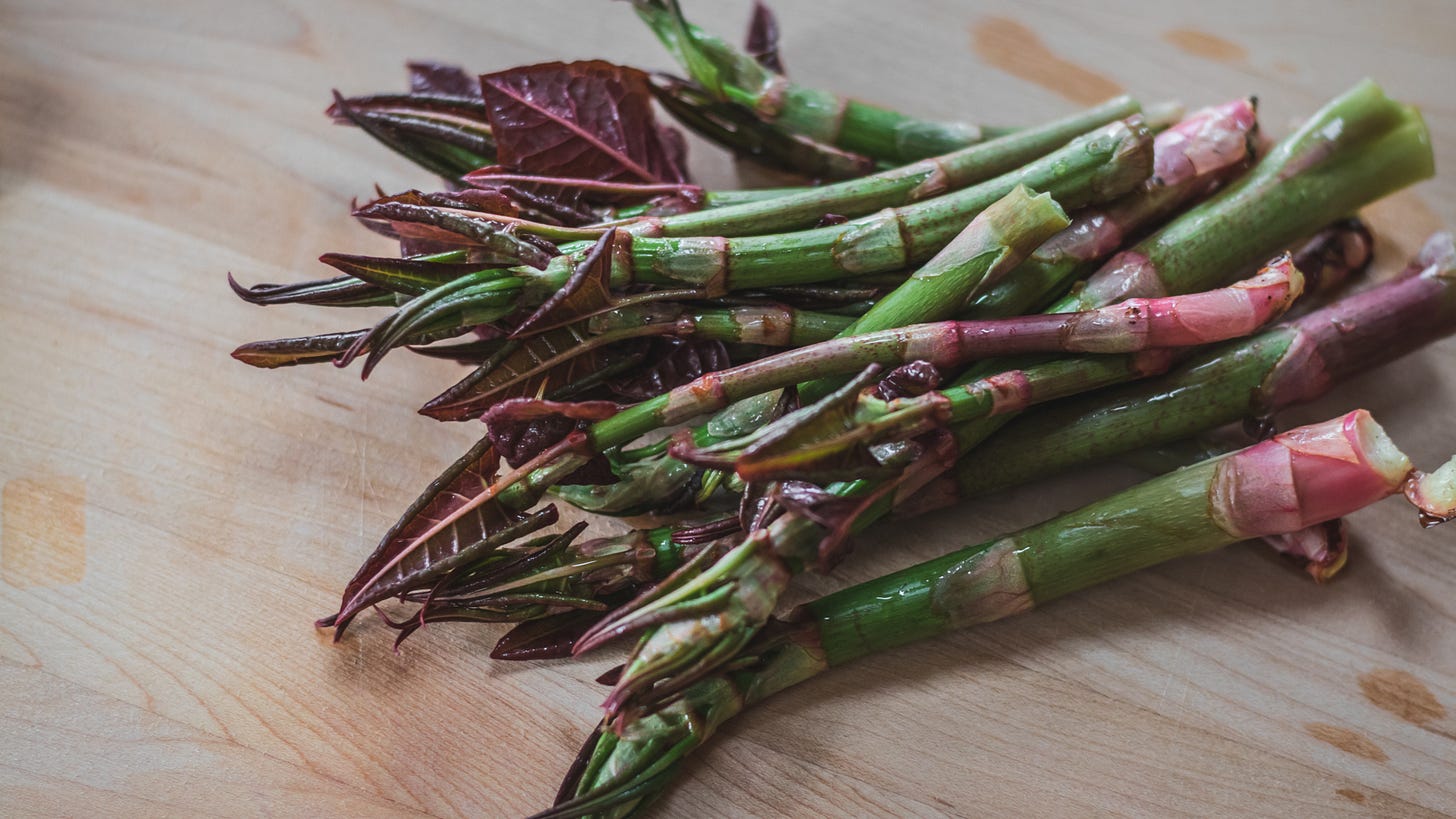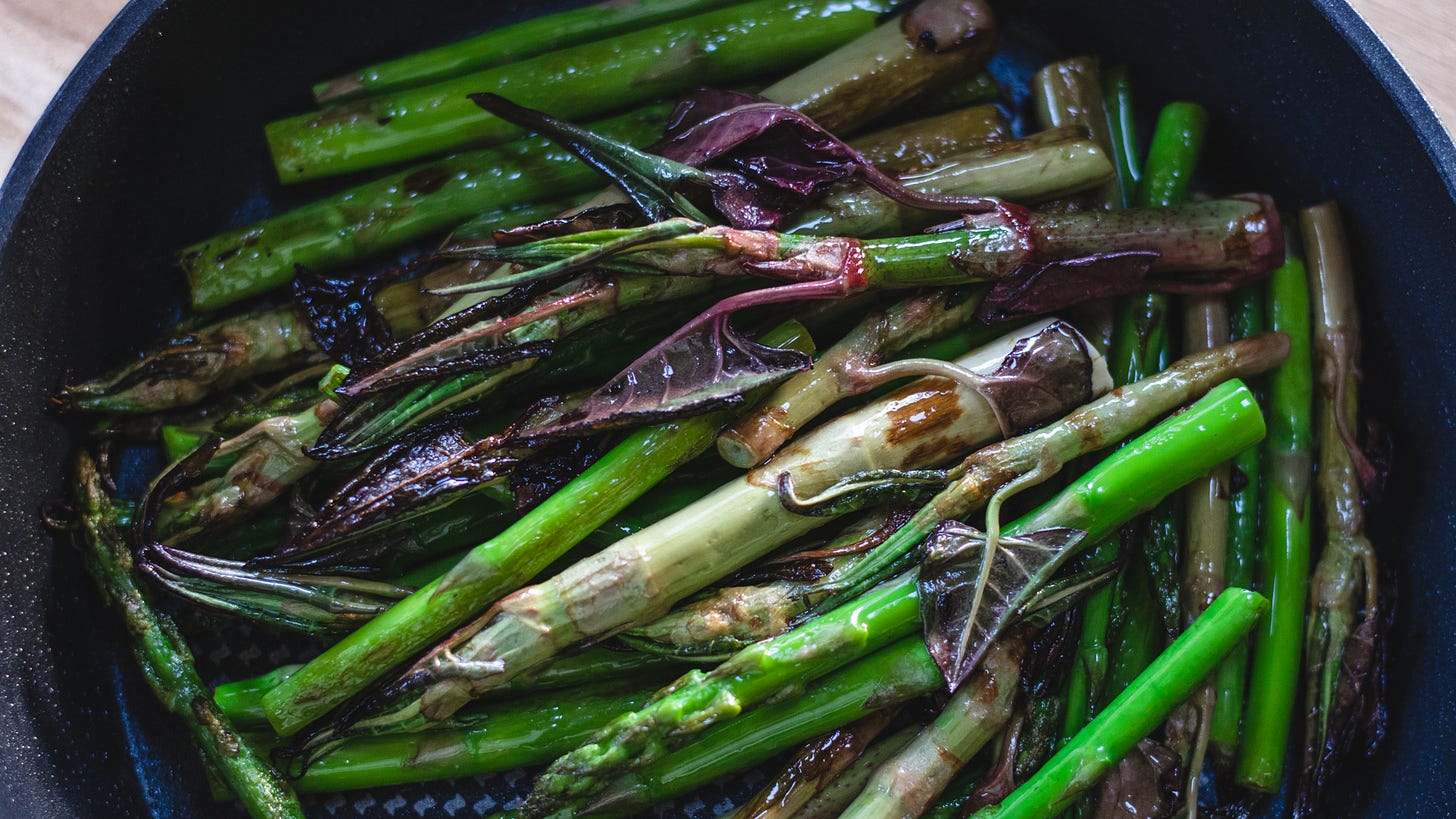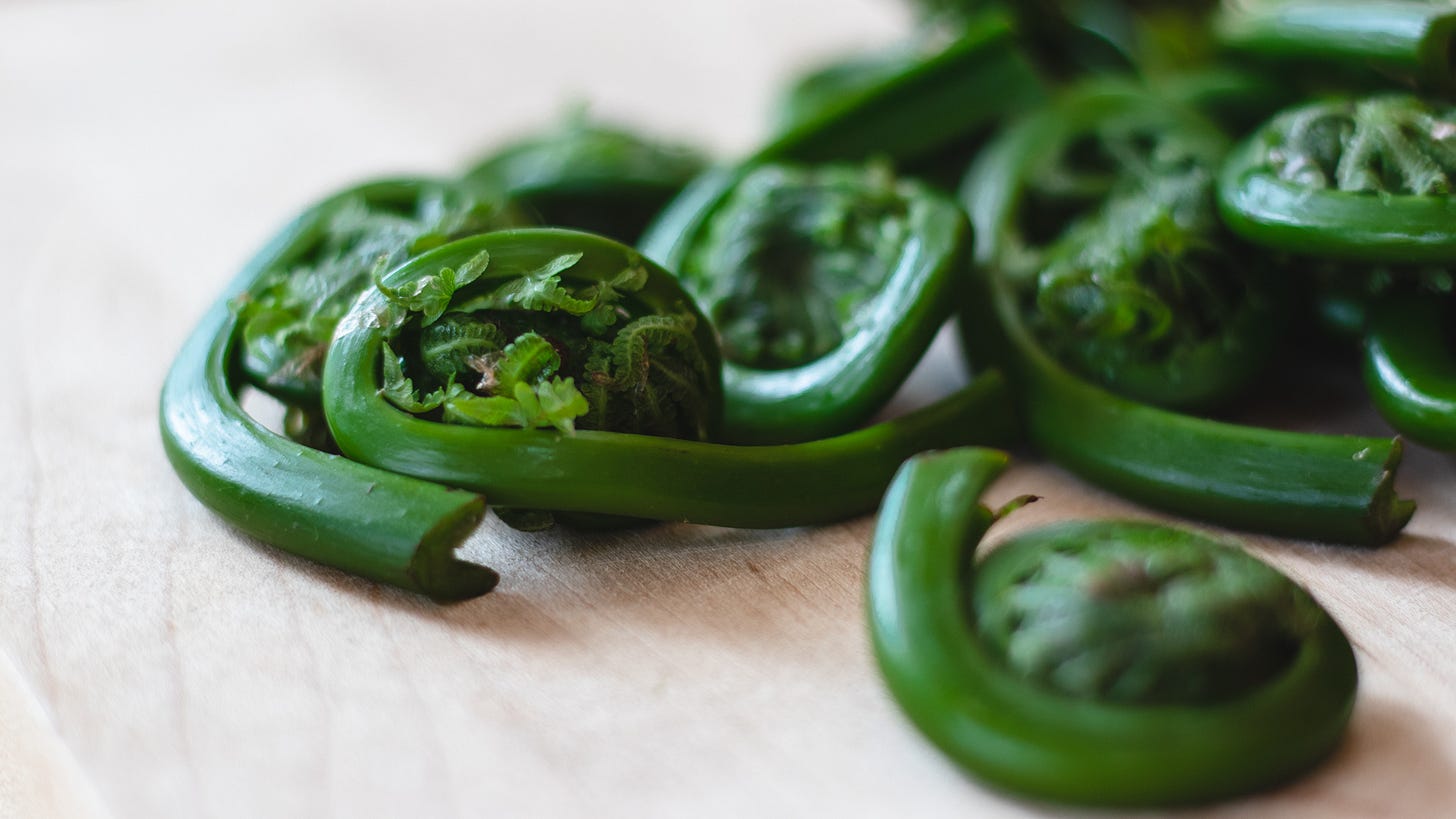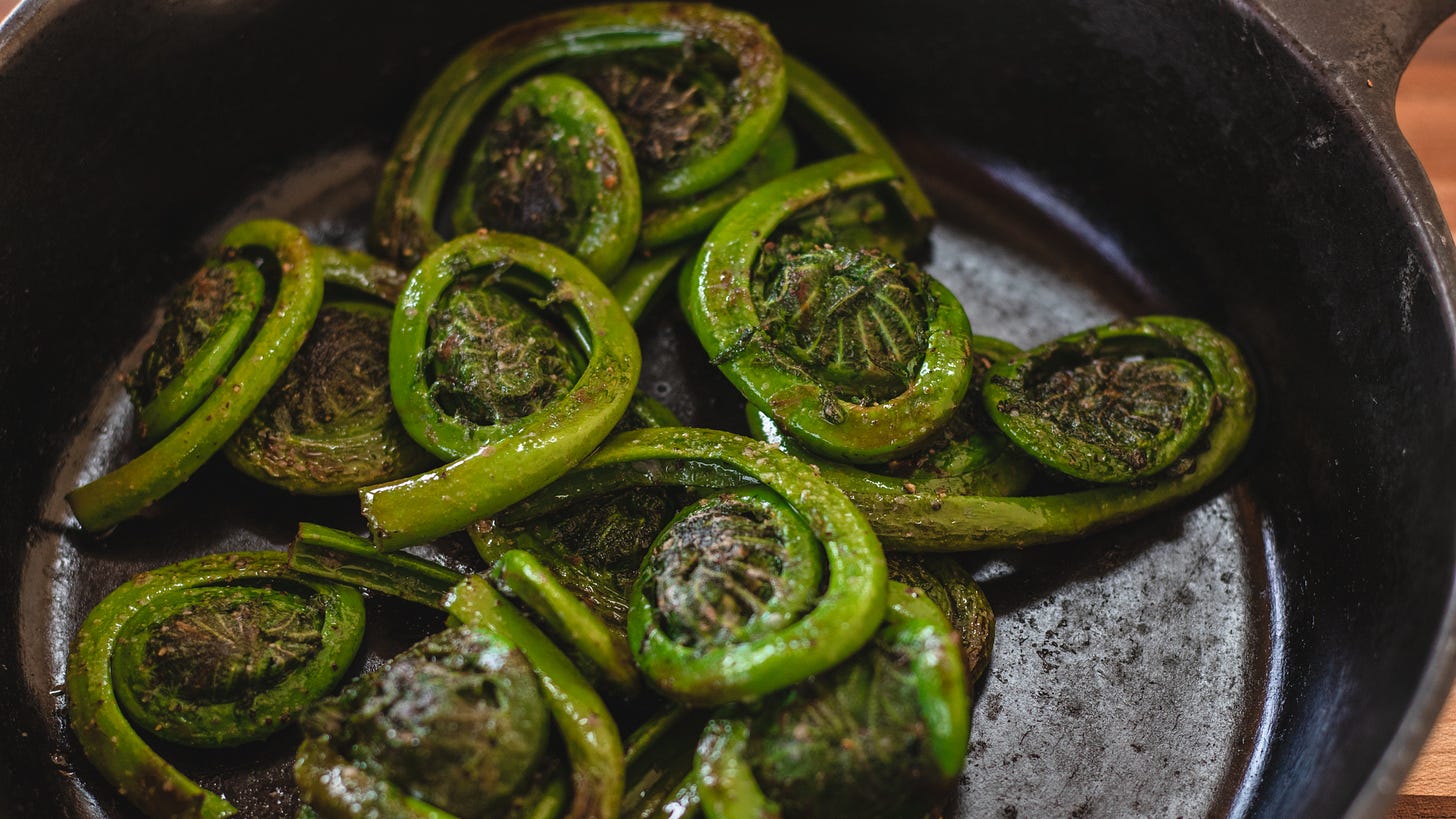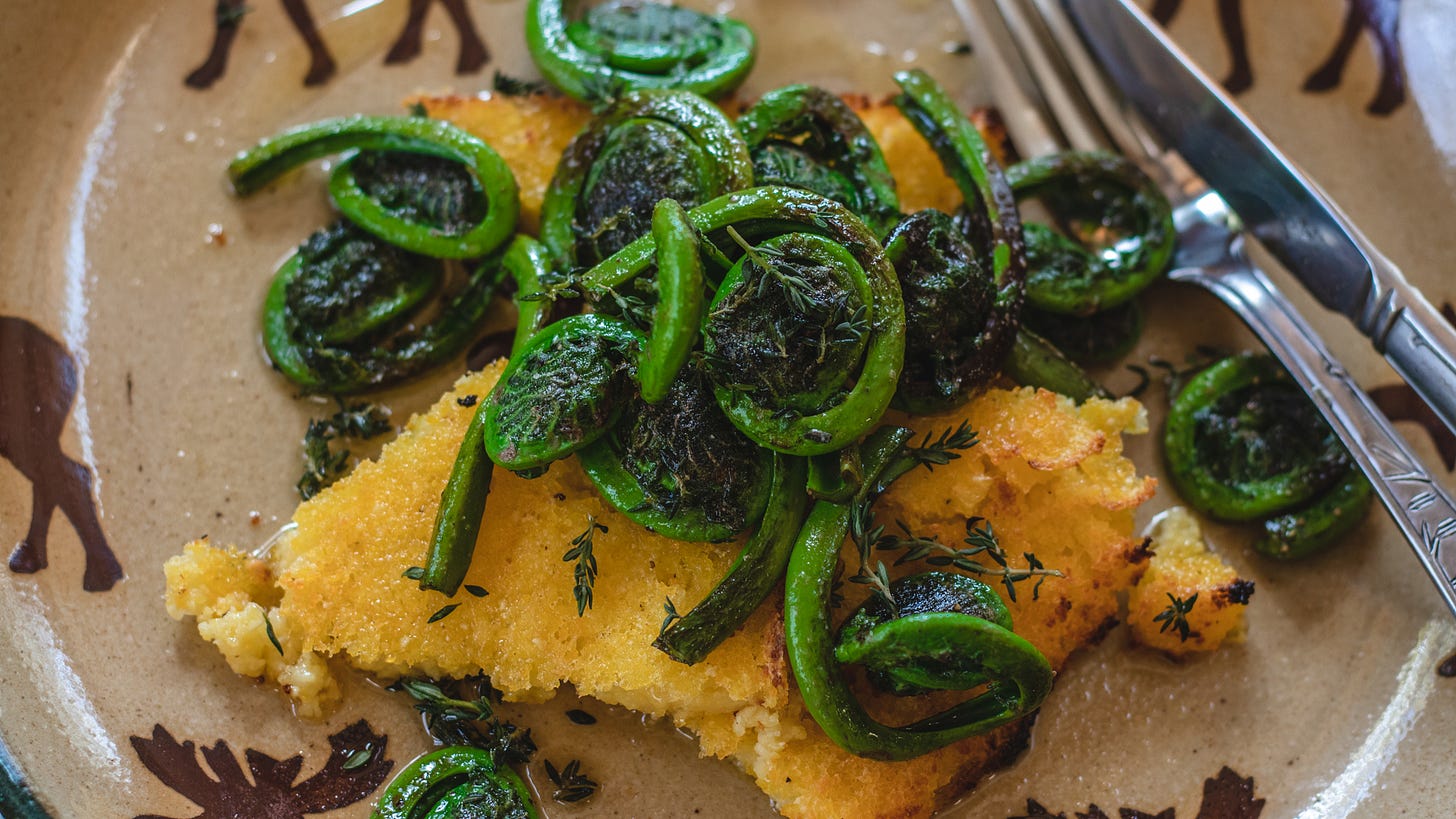Spring foraging in Vermont
How to prepare Japanese knotweed and Ostrich fern fiddle heads
Vermont is rich in native (and non-native, too) plants, herbs and mushrooms. Especially in the spring there’s a lot going on in the woods, close to water, on meadows… Nature is providing such an abundance of edible treats, you just gotta know how to find them, forage them and prepare them. I’ll tell you about two of these - fiddle heads and Japanese knotweed - and how to prepare them in this article.
When I first came to Vermont in 2021 it was autumn time and nature was almost going back into hibernation, except for mushrooms that is. It wasn’t until last year spring that I got to experience nature waking up to a new season of flowers, shrubs, trees and other plants.
Compared to Germany where I grew up there’s many (medicinal) plants and herbs that can be used for teas or tincture or salves, such as dandelion - did you know, you can use and prepare almost all (except for the stem) of, what we call weeds, of that amazing plant?
There’s also plantain, (wood)nettle, sorrel, elderberry or elderflower, which I love.
Where I’m staying right now, there’s several beautiful small bushes growing and I’ll definitely make some elderflower syrup again. Elderflower syrup turns the beverage or food you add it to into a floral spring inspired treat.
Other than that there’s some greens and plants that, when harvested young, are edible and very delicious. Raw they’re great in salads or Smoothies.
Some of them I knew from Germany. I’m familiar with nettle, chickweed, goutweed or ground elder, ground ivy, wild garlic or ramps and many more. Some of these can be found in Vermont and are very invasive. People with large lawns and/or properties see them as weeds that you gotta get rid of asap.
I understand that, but can also see the good qualities, such as their nutritional benefits, in them, as it is the case with Japanese knotweed.
Speaking of which, what I didn’t know of and had no clue where to find them, how to forage, harvest and prepare them:
Fiddle heads, the young shoots of the Ostrich fern, and Japanese knotweed.
Both are edible, when harvest young, that is as the young shoots pop out of the ground in the spring. In Vermont this is around late April and early May.
I’ve had this article in mind for a quite a while without actually knowing, where I’d be, in or out of Vermont, while those shoots are out in that short window.
So I was prepared to share photos of last year’s foraging, at least with the fiddle heads. And probably would’ve needed to wing it with the Japanese knotweed, because I didn’t forage those myself last year and didn’t prepare them.
Luckily, though, during my short hike last Sunday I found young tender Japanese knotweed shoots. I was hoping to find them and had my eyes glued to the ground almost all of my hike. I also already knew that a neighbor down the street had tons of fiddle heads popping up in her yard. Lucky me!
Japanese knotweed
As the name says it already, it’s consider a weed and is highly invasive here in Vermont. If I had lost one of the shoots, the little stalks on my hike - I found it close to a wet/marshy spot - last week, a new plant would’ve started growing latest next spring right at that spot. I didn’t drop any of the small handful I gathered, since I’ve had some plans with them.
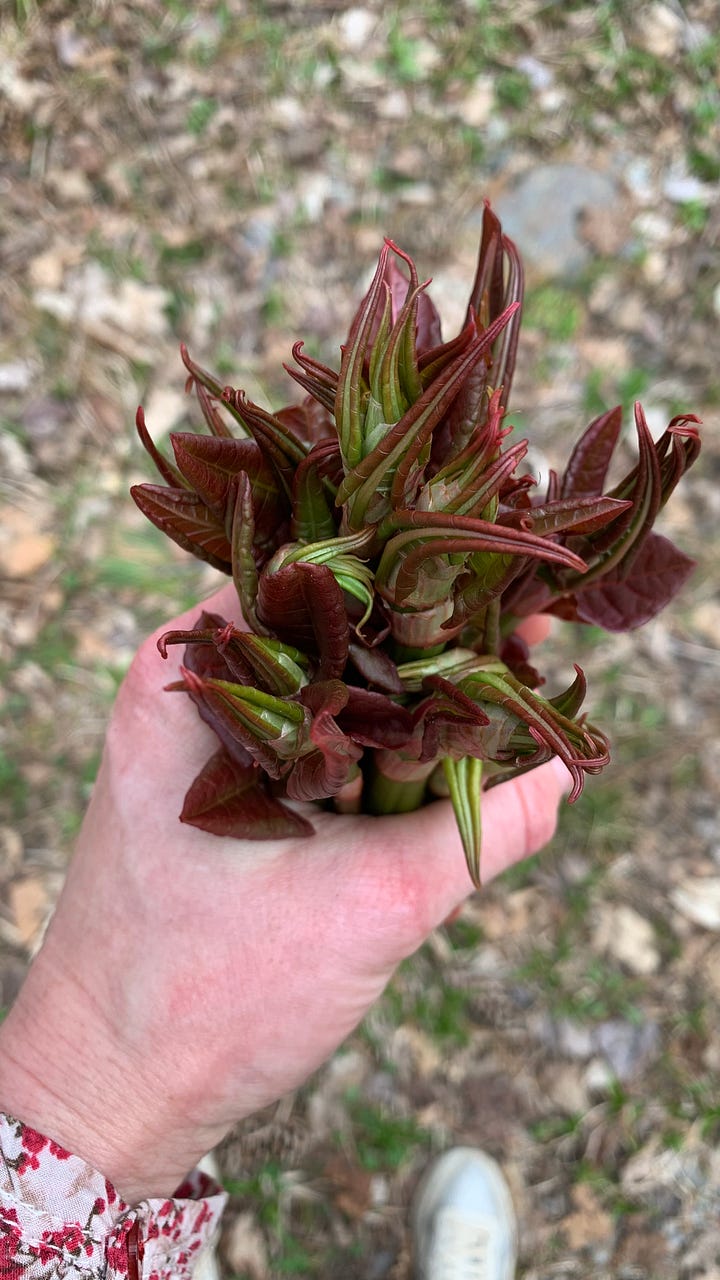
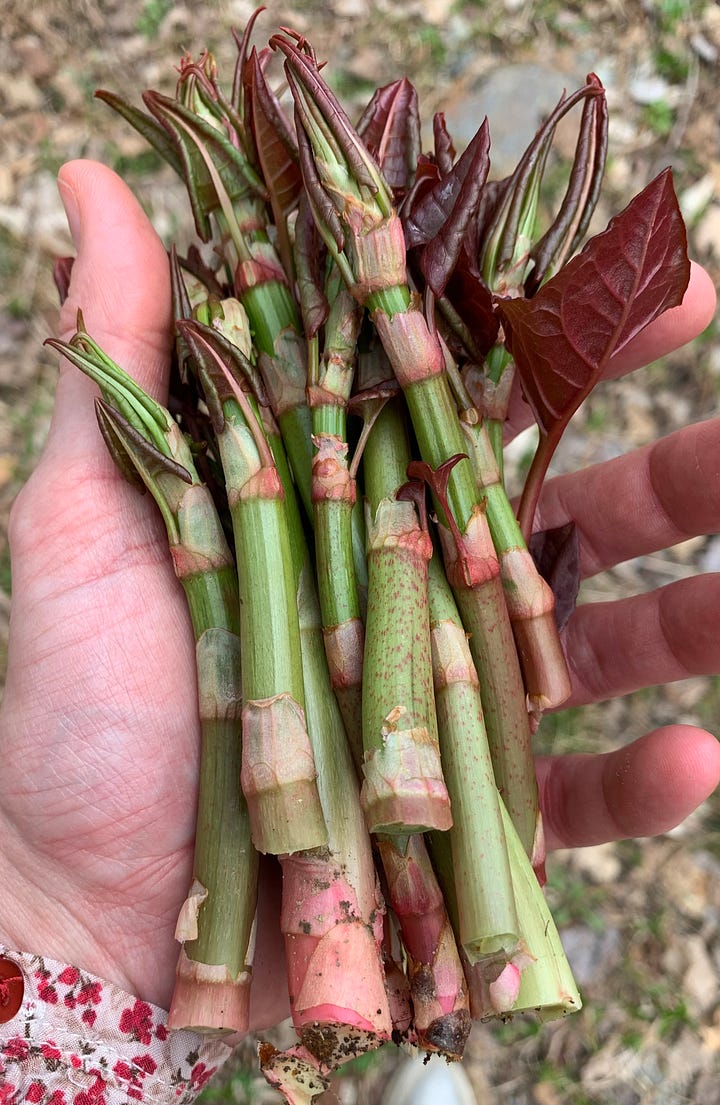
Japanese knotweed is native to Asia, hence the name, and has dominated many parts of Vermont already. It’s got quite some resiliency to the Vermont weather with its strong root system and can survive even the harshest trimming. If you’d left a tiny bit of a stem, it grows back quickly.
Considering all of this, Japanese knotweed is edible and rich in Vitamins (A and C), too. It’s considered an herb and is supposed to have healing properties, e.g. in cases of a sore throat, coughing, even bronchitis.
While I haven’t tested that, I did play around with it in the kitchen. I intuitively harvested very young shoots only that had just popped out of the ground and had a length of approx. 10-15cm (4-6 inches).
After my harvest I read that this would literally be the sweet spot for them. Once they grow bigger, they’re not so tender anymore. And, although I haven’t tried them at their later growth stage, I can imagine they also change their taste into even more tart/sour.
I had read before that Japanese knotweed is quite tart and almost tastes like rhubarb. And I was like, nah, I’m not gonna use that in sweet dishes. That’s what I usually do with rhubarb, turn it into a compote or use it in cakes.
I’m glad I didn’t, because I’ve also read, it’d be a lot like green asparagus, too. At least texture wise. So, I followed a tip of stir frying the young knotweed shoots. Since I also had green asparagus in the house, I did half and half, same amount of Japanese knotweed and same amount of green asparagus. I stir fried both in toasted sesame oil and added some soy sauce to it, as was the suggestion of the Blog I found, too.
How did it turn out?
It was delicious! I couldn’t taste any similarity to rhubarb at all except for a slight tanginess/tartness. But combined with the green asparagus and the saltiness of the soy sauce, it just added a nice twist to my dish. I cooked up some rice and had made a Korean style marinated Tofu (using Gochujang, soy sauce, Mirin and some maple syrup) and served the Japanese knotweed/green asparagus combo to both. Asian fusion kitchen a la Mel, at its finest.
Fiddle heads aka Ostrich fern
In a state such as Vermont there’s many different types of ferns growing. But not every one is edible. I’m in a Facebook Group that dedicates all of its posts to wild herbs and wild foraging and every spring I see at least one person sharing a photo with different fiddle heads - as all of the young shoots are called, since they do look like little fiddle heads - of different fern species next to each other.
From my foraging last year I already knew, that the fiddle heads of the Ostrich ferns don’t have any tiny hairs and fluff to their stem whatsoever. The stems are very clean, if I’d have to find a word for that.
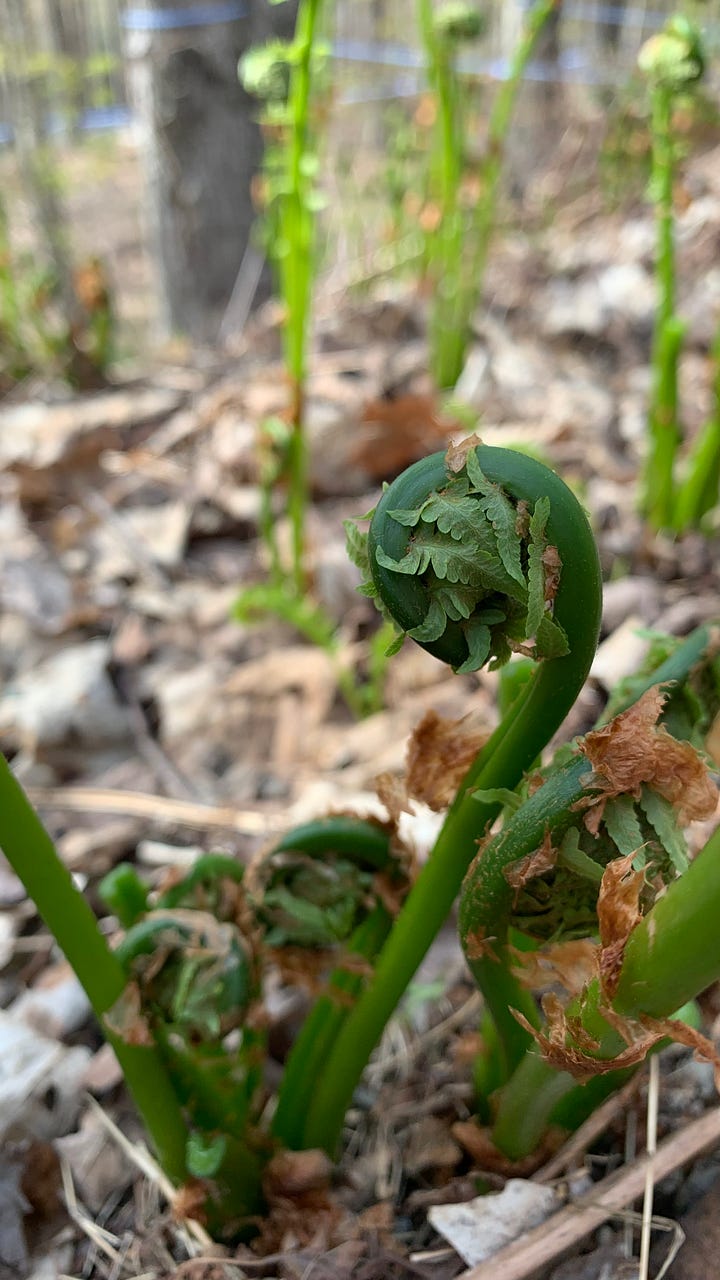

They do have some brownish papery stuff around their little heads that you need to take off, when preparing them. Just dump them in water and pull that paper off. Ostrich fern fiddle heads also are quite large compared to other fern fiddle heads.
I always read, especially in that Facebook group, you’re not supposed to harvest too many heads of a single plant in order for the plant to keep growing and thriving.
You’re also supposed to snip/cut off only the heads, not part of the stalk as well. Last year we did do that and cooked up the whole thing (the heads and part of the stem), which was still good to use, no stringiness or stalkiness to it. This year, though, I followed the advise and only harvested the heads.
The easiest and most delicious way to prepare fiddle heads is to stir fry them, as well. You don’t need any special oil or additive (such as soy sauce) other than some salt and maybe pepper. Just the toasting does a lot already to those tender heads. And if you don’t overcook them, they still have that fresh green crunch or crisp bite to them, which I like a lot.
If you’d ask me, what they taste like, I’d say like a green or string bean. I’ve also read they’d taste like green asparagus.
I did make a special dish with those fiddle heads I harvested at the neighbors yard.
I had made some cheesy Polenta slices, fried my fiddle heads in some olive oil and salt & pepper and added some browned thyme butter to it. Oh, my gosh! Heavenly delightful.
I’ll share the recipe for that dish in next week’s Blog Post in my series, Mel’s Staples, with you. So watch out for that.
Have a delicious rest of your weekend!
Yours truly
Mel




